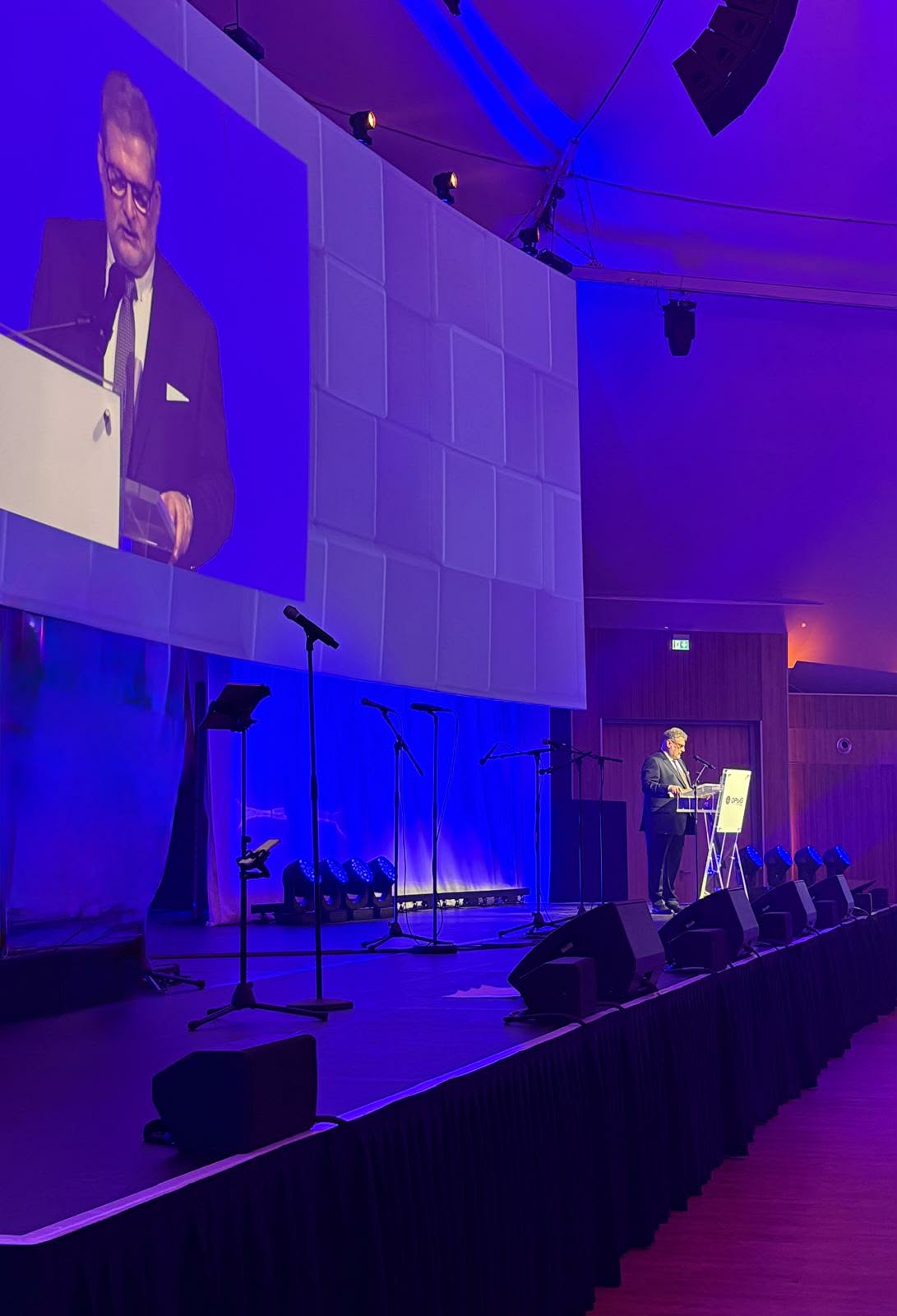
When Boeing’s 777 first took to the skies in the 1990s, it proved that two engines could indeed do the work of four, much to the surprise of aviation traditionalists who probably thought twin-engine aircraft were just showing off.
Now, three decades later, Boeing is back with the 777X, ready to shake up the long-haul market once again with bigger cabins, longer range, and advanced engines.
 Photo: Boeing
Photo: BoeingBoeing 777 vs 777X
777X Design Changes
The 777X represents a significant departure from its predecessors, introducing fundamental changes that redefine what passengers and airlines can expect from wide-body aircraft.
Boeing has developed 2 distinct variants:
- The 777-9, which stretches nearly 77 meters in length and can accommodate approximately 426 passengers in a typical two-class configuration, is the world’s largest twin-engine commercial aircraft.
- The 777-8, while slightly smaller, focuses on ultra-long-range capabilities with enhanced payload flexibility.
The most visually distinctive feature is the aircraft’s revolutionary carbon-fibre wing design with folding wingtips.
Unlike previous 777 models with wingspans ranging from 60 to 64.8 meters, the 777X extends to an impressive 71.75 meters when fully deployed. These folding tips aren’t just for show—they’re engineered to fit standard airport gates while maximising aerodynamic efficiency during flight, reported Simple Flying.
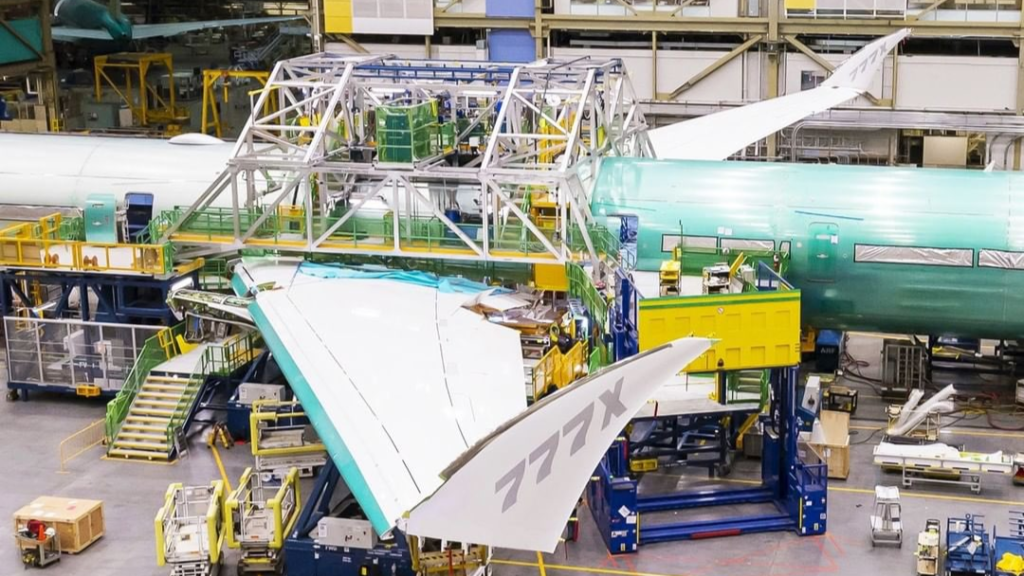 Photo: Boeing 777X Production Twitter
Photo: Boeing 777X Production Twitter777X Advanced Engine
At the heart of the 777X’s performance lies General Electric’s purpose-built GE9X engines, representing a quantum leap in propulsion technology. These powerhouses deliver approximately 10% better specific fuel consumption compared to the GE90 engines powering current 777-300ER aircraft.
The aerodynamic enhancements extend beyond the engines. The new composite wing design reduces drag while improving lift-to-drag ratios during cruise flight.
Combined with the advanced propulsion system, Boeing expects overall fuel efficiency improvements of 12-13% compared to existing 777 variants.
For the 777-9 specifically, the extended fuselage allows for optimised seating configurations that can reduce fuel burn per passenger by up to 20% compared to the 777-300ER—a significant advantage for airlines focused on operational economics.
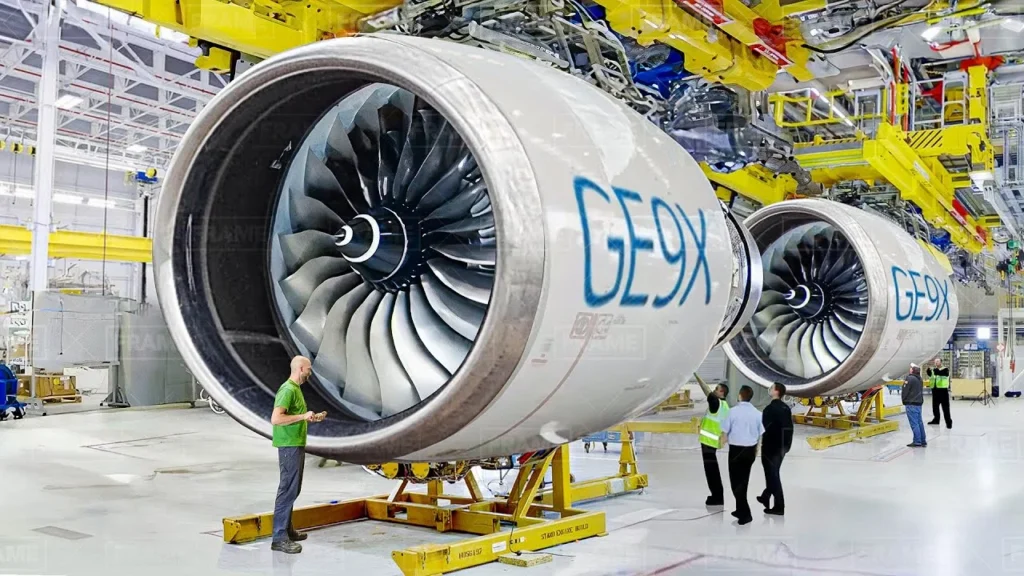 Photo: FRAME | YouTube
Photo: FRAME | YouTubeEnhanced Passenger Experience
The 777X introduces several passenger-focused improvements that transform the flying experience. The cabin width increases by four inches compared to the 777-300ER, achieved through innovative sidewall design that reduces thickness by two inches on each side.
Window size represents another major upgrade. While existing 777 variants already feature windows approximately 12% larger than those on the Airbus A350, the 777X expands this advantage to roughly 29%, providing passengers with significantly better views and natural light.
The aircraft’s environmental control system has been completely redesigned. Traditional 777s maintain cabin altitude around 8,000 feet, but the 777X reduces this to 6,000 feet during cruise. Noise reduction represents another significant improvement. The GE9X engines operate 8 decibels below international noise standards, compared to 3 decibels for previous 777 engines.
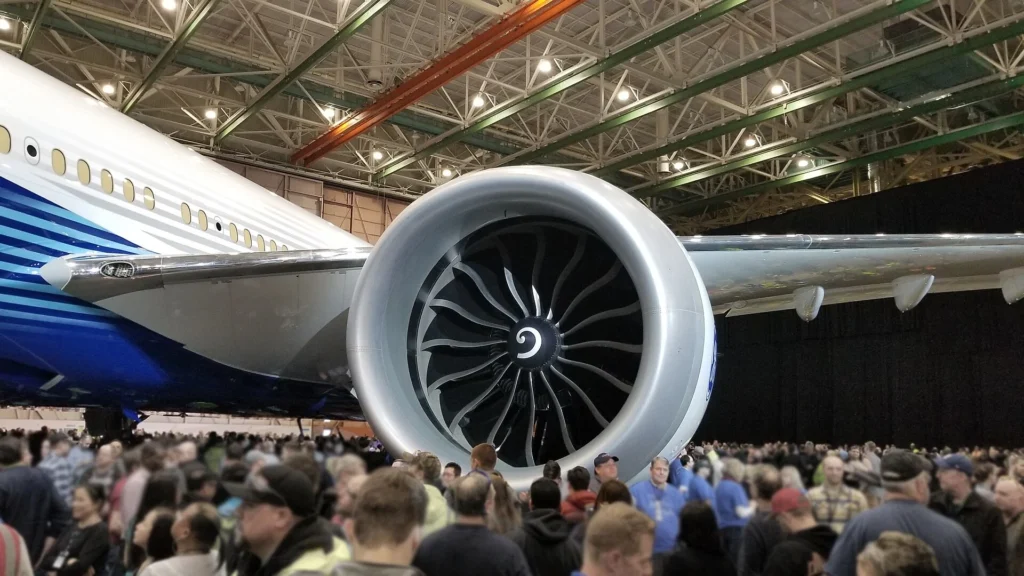 Photo: By Dan Nevill from Seattle, WA, United States – 20190313_085824, CC BY 2.0 | Wikimedia Commons
Photo: By Dan Nevill from Seattle, WA, United States – 20190313_085824, CC BY 2.0 | Wikimedia CommonsMarket Positioning
The 777X enters a competitive long-haul market where airlines increasingly demand aircraft that can serve point-to-point routes efficiently while maintaining hub-and-spoke network capabilities. The aircraft’s range capabilities particularly stand out.
The 777-8 offers up to 8,745 nautical miles of range, exceeding even the ultra-long-range 777-200LR.
Airlines have responded positively to the 777X’s value proposition, with over 500 orders from major carriers including Emirates (EK), Qatar Airways (QR), Lufthansa (LH), Singapore Airlines (SQ), and British Airways (BA). This strong order book reflects industry confidence in the aircraft’s ability to replace ageing 4-engine widebodies like the Boeing 747 and Airbus A380.
Boeing claims the 777X will deliver 5% better aerodynamics and 10% lower operating costs than comparable Airbus models.
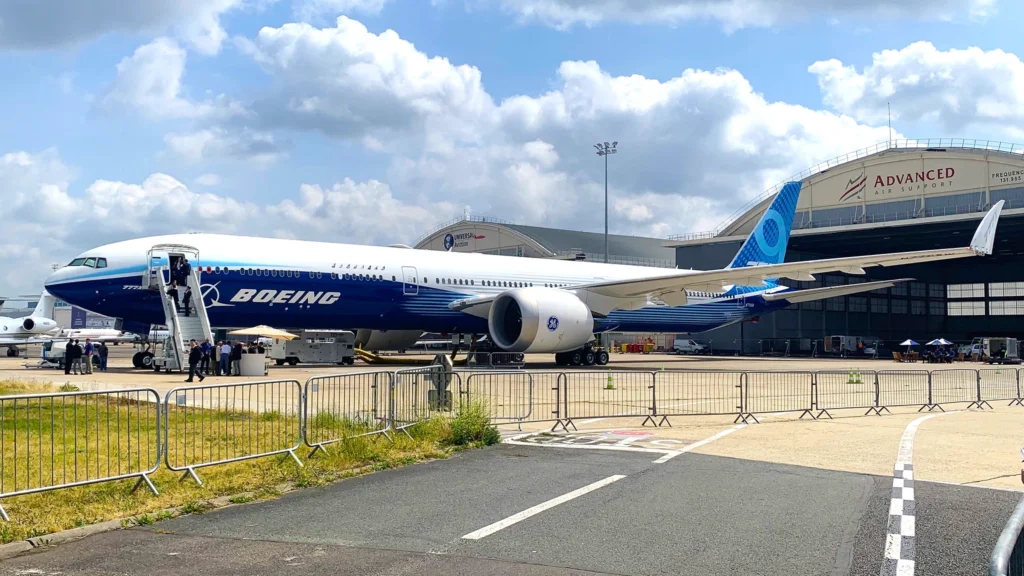 Photo: Steve Jerrim
Photo: Steve Jerrim777X Certification Challenges
The 777X program has encountered significant delays since its 2013 launch, with initial service entry planned for 2020 now pushed to late 2026.
Technical challenges have plagued the certification process, including a serious uncommanded pitch event during flight testing in 2020 that required extensive design reviews and software modifications.
More recently, engineers discovered cracks in the engine thrust link components during 2024 testing, leading to a four-month pause in certification activities. Boeing has since redesigned these critical components to eliminate vibration-induced stress and resumed certification flights in January 2025.
The manufacturer now expects final certification by the end of 2025 or early 2026, with commercial service entry following shortly thereafter.
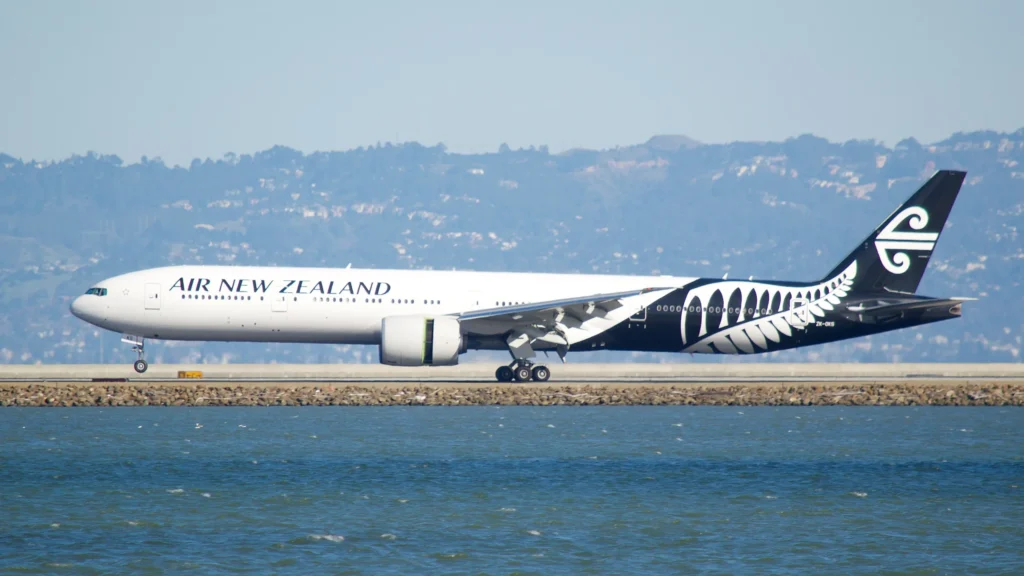 Air New Zealand Boeing 777-300ER; Photo- Bill Abbott | Wikimedia Commons
Air New Zealand Boeing 777-300ER; Photo- Bill Abbott | Wikimedia CommonsComparison Table
| Variants | 777-200, 777-200ER, 777-300, 777-300ER, 777-200LR | 777-8, 777-9 |
| Length | 63.7m (777-200) to 73.9m (777-300ER) | 69.8m (777-8) to 76.7m (777-9) |
| Wingspan | 60.9m (777-200) to 64.8m (777-300ER) | 71.75m (extended), 64.8m (folded) |
| Wing Design | Aluminium construction, fixed wingspan | Carbon-fibre composite with folding wingtips |
| Engines | GE90, PW4000, or Trent 800 series | GE9X exclusively |
| Fuel Efficiency | Baseline performance | 12-13% improvement over current 777s |
| Maximum Range | Up to 15,840 km (777-200LR) | Up to 16,190 km (777-8) |
| Passenger Capacity | 314-396 passengers (typical 2-class) | 384-426 passengers (typical 2-class) |
| Cabin Width | Standard width | 4 inches wider than 777-300ER |
| Window Size | Standard size | 29% larger than the current 777 windows |
| Cabin Altitude | ~8,000 feet | ~6,000 feet |
| Noise Level | 3 decibels below ICAO standards | 8 decibels below ICAO Stage 5 standards |
| Overhead Bins | Standard capacity | Nearly double the capacity |
| First Flight | 1994 (777-200) | 2020 (777-9) |
| Service Entry | 1995-2006 (various models) | Expected 2026 |
| Orders/Deliveries | 2,100+ delivered | 500+ orders, none delivered yet |
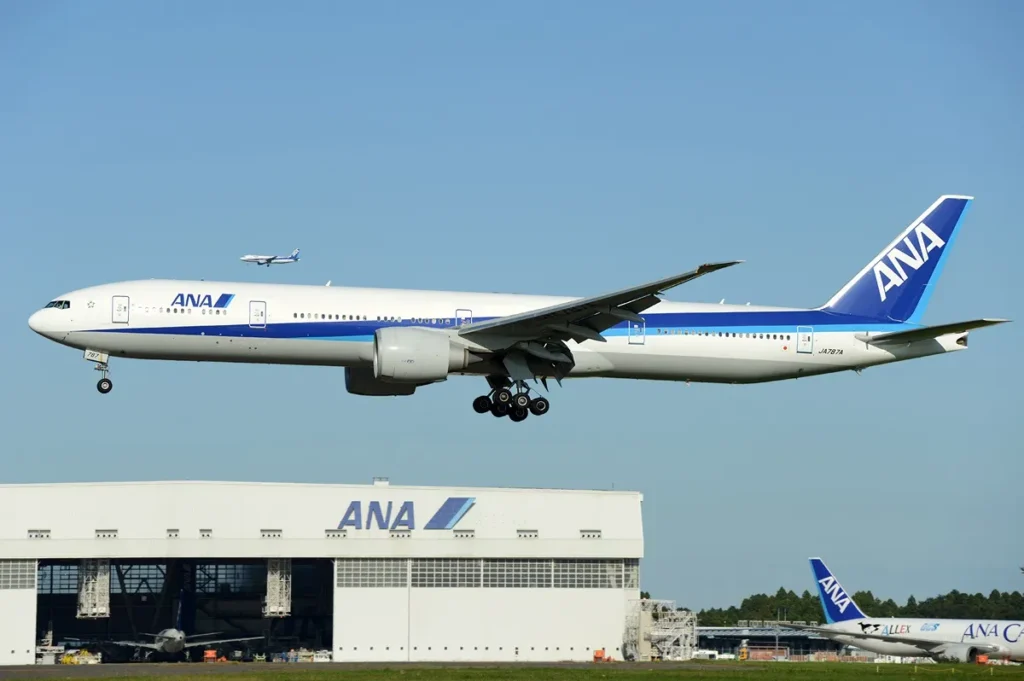 Photo- Toshiro Aoki; Wikimedia Commons
Photo- Toshiro Aoki; Wikimedia CommonsBottom Line
The Boeing 777X stands as aviation’s next evolutionary step, combining the best elements of its predecessors while introducing innovations that could reshape long-haul travel.
With its folding wings, massive engines, and passenger-focused improvements, the aircraft promises to deliver what airlines and travellers have been waiting for—assuming it can actually get certified and delivered sometime this decade.
Whether the 777X will live up to its ambitious promises remains to be seen, but one thing is certain: the future of twin-engine long-haul aviation looks bigger, quieter, and more efficient than ever before!
Stay tuned with us. Further, follow us on social media for the latest updates.
Join us on Telegram Group for the Latest Aviation Updates. Subsequently, follow us on Google News
Boeing 777X- A Successor of Airbus A380 or Another Failure?
The post Differences Between New Boeing 777X And 777 appeared first on Aviation A2Z.

